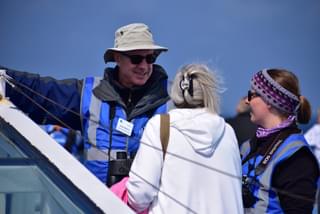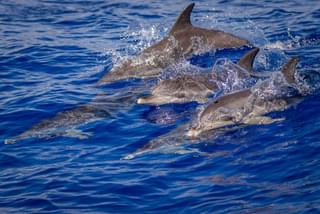Risso's dolphin
.jpg?w=1400&h=600&q=85&auto=format&fit=crop&dm=1683137501&s=c61ce0f4623f97908a74585ba2d77f5d)
Grampus griseus
3.6 - 3.8m
Grey
Teeth
Dorsal fin
Up close, Risso’s dolphins are hard to be mistaken for anything else. Risso’s dolphins are born dark grey, but over time they obtain scarring due to interactions with other Risso’s dolphins and from their main prey; squid. These scars stay white, so over time, the scars can accumulate to the point where the animal can appear completely white. Risso’s dolphins have a tall, sickle-shaped fin which is dark and rarely scarred. The dorsal fin can easily be mistaken for that of a killer whale if seen from a distance due to its height and colour. They have a bulbous forehead and an indistinctive beak, and a large robust, torpedo-shaped body.
Key features:
- Rounded melon, blunt face - no beak
- Tall, falcate, dark dorsal fin
- Pale scarring on body of adults, which increases with age
- Travel in tight pods, often chorus-lining
Behaviour
Risso’s dolphins are mainly nocturnal hunters, and in daytime will often be seen slow swimming and logging. They are highly inquisitive animals that frequently breach, spy-hop and tail slap. Large nursery pods of Risso's dolphins can occur but they are typically seen in pods of 1-15 individuals. They are highly sociable and are commonly seen with other cetacean species.
Threats
Like many other dolphins, Risso’s dolphins are subject to threats such as entanglement in fishing gear, pollution, collisions with vessels, decreasing availability of prey, anthropogenic sound and habitat degradation.
Distribution
Risso’s dolphins have a worldwide distribution from the tropics to temperate waters. They are more commonly seen around the continental shelf and in deep water. It is believed there is seasonal movement of Risso’s dolphins from offshore to inshore in some areas, although it is unknown if this occurs in European waters.
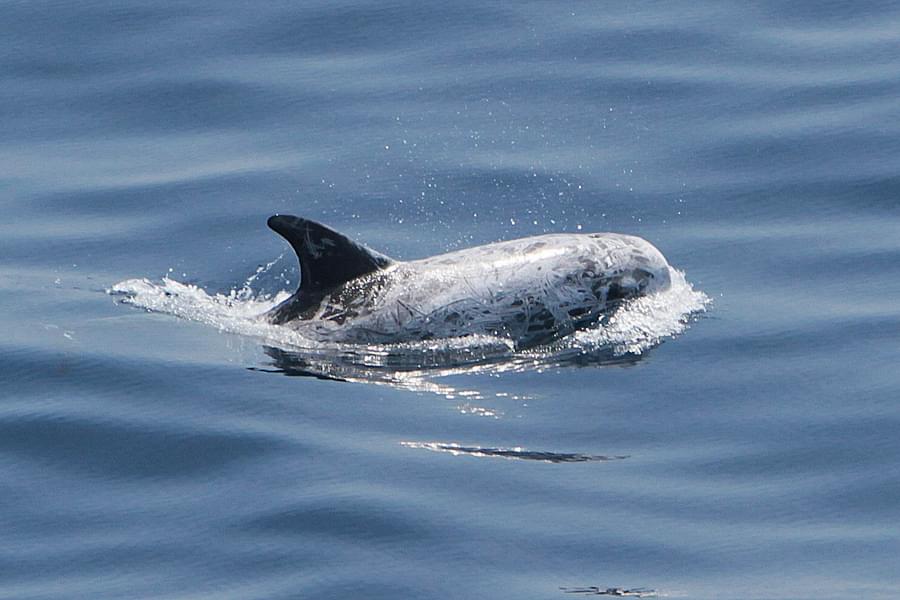
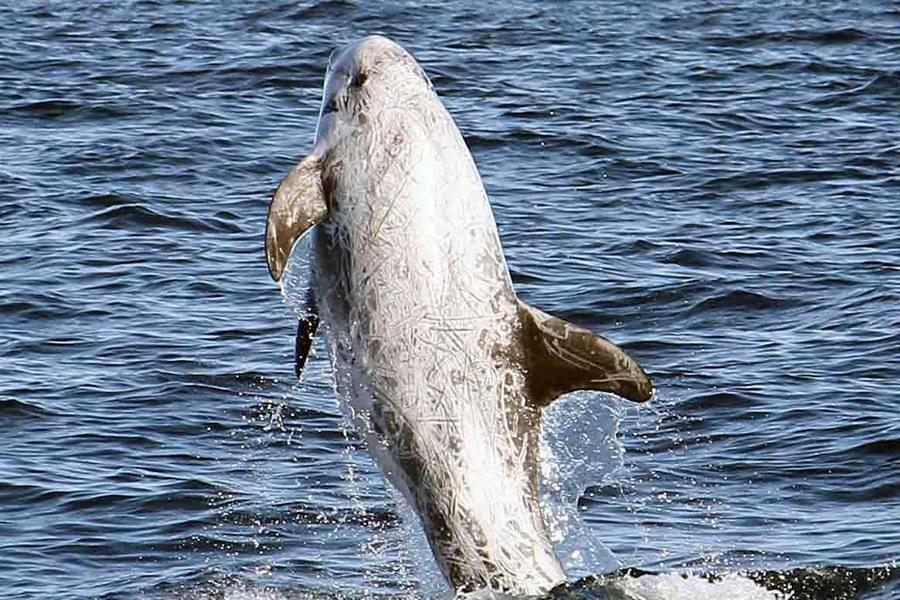
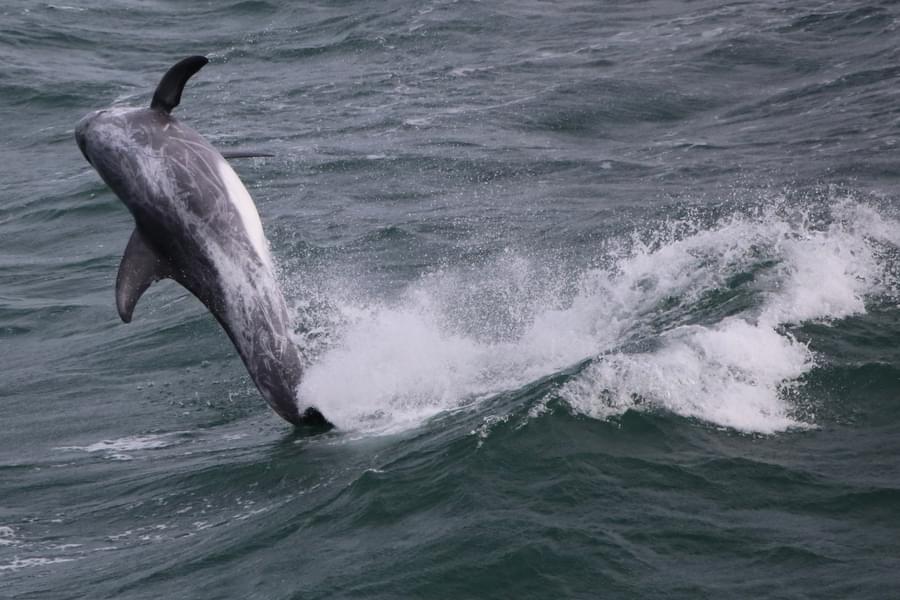
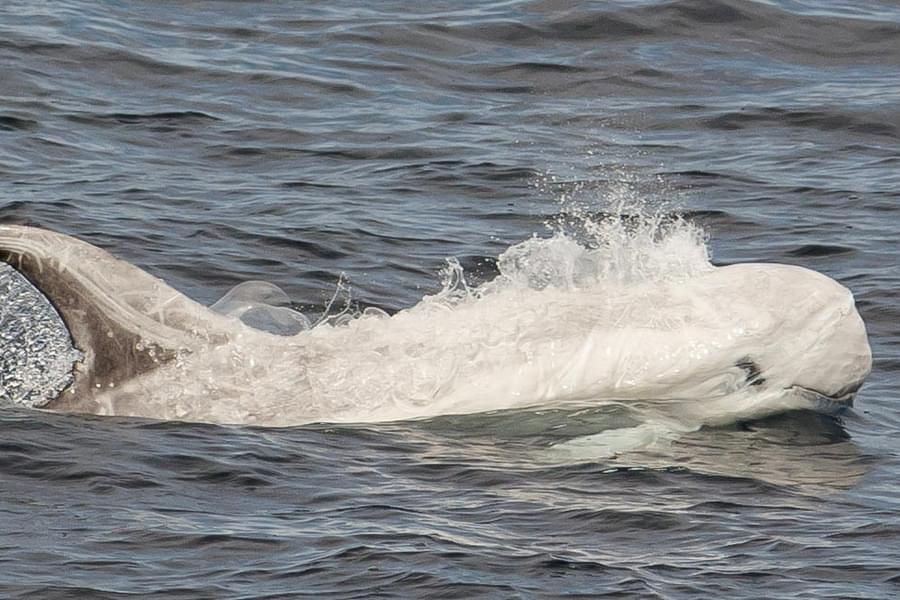
.jpg?w=900&h=600&q=85&auto=format&fit=crop&dm=1683137501&s=b6b5d7a43b55db9069e144fbf9d4f198)
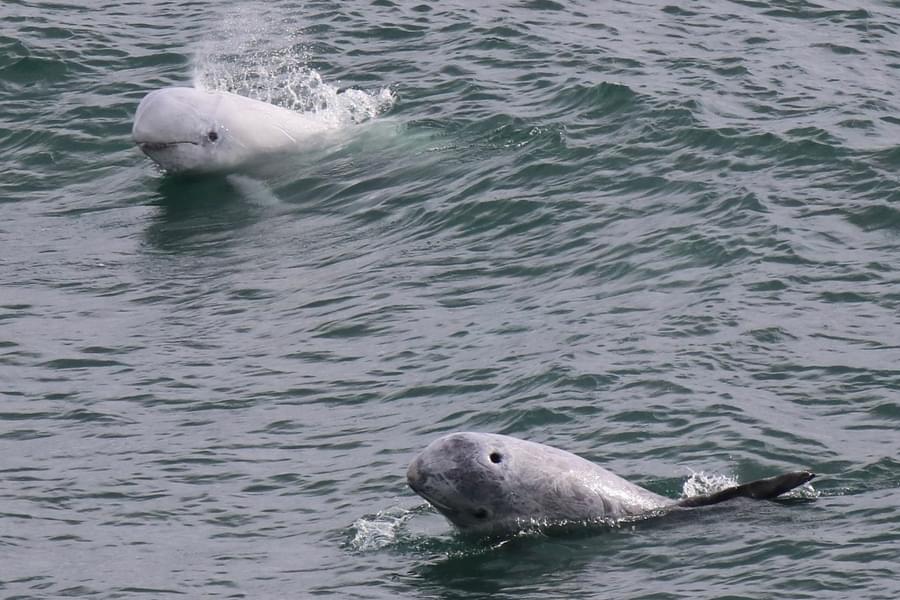
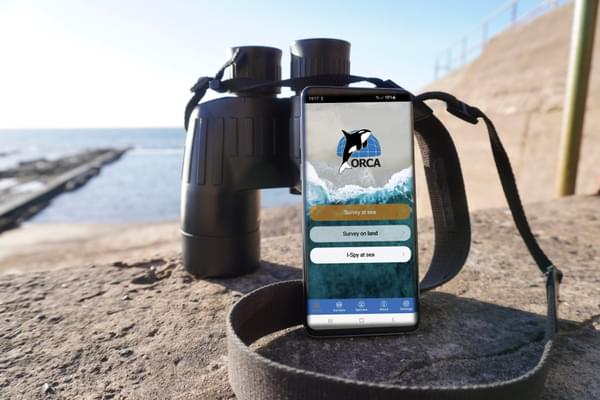
Study whales and dolphins as an ORCA OceanWatcher
The ORCA OceanWatchers online training course, along with a bespoke app, will enable everyone to collect data about whales, dolphins and porpoises. And it can be collected from anywhere that you can see the sea - whether that’s from your local beach, on holiday at the coast, scanning the seas from a cruise ship, travelling via ferry, or from your own boat.
You may also be interested in

